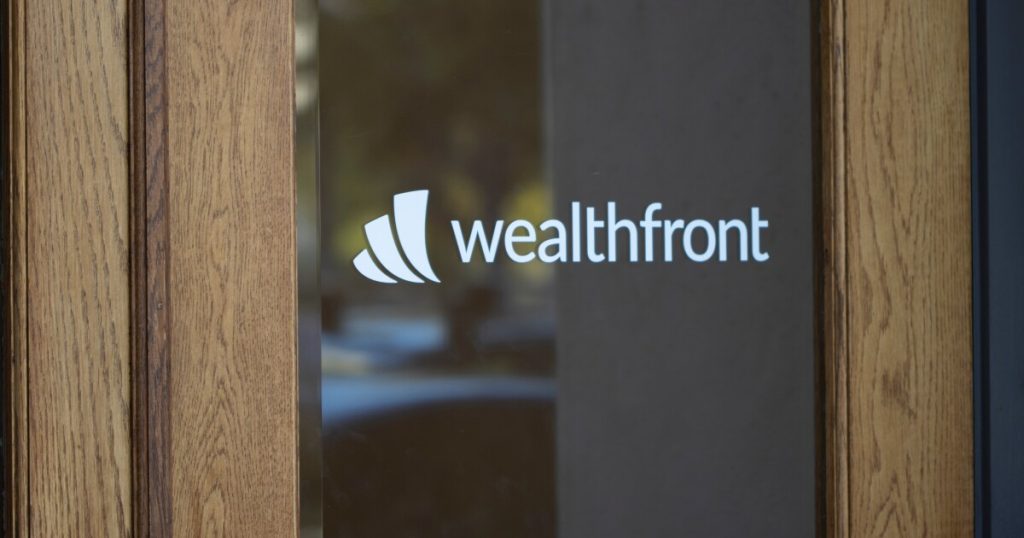- Key Insight: Wealthfront’s IPO filing, published yesterday, could be impacted by upcoming shutdown.
- Expert Quote: Kyle Standford, Pitchbook: “Wealthfront is looking to capitalize on the strong IPO market for fintechs this year.”
- Supporting Data: Wealthfront reports 44% YoY revenue growth from July 2024 to July 2025.
The robo-adviser fintech Wealthfront has publicized its financials in preparation for an IPO.
Wealthfront released the S-1 registration filing it submitted to the Securities and Exchange Commission on Monday. The fintech previously
However, threats of a government shutdown may impact the company’s IPO timeline, as the SEC would be impacted if Congress does not meet the deadline of midnight on Tuesday to approve a new budget for federal funding. Companies often get their final set of SEC comments and effectiveness notes while on their IPO roadshows.
Since Wealthfront originally filed its IPO registration back in June, its S-1 statement has already been submitted to the SEC for about two months. Wealthfront declined to comment on how a government shutdown would affect its IPO plans.
The SEC previously published a
Wealthfront joins several other
Mergermarket head of equity capital markets Samuel Kerr told American Banker that since a few recent fintech IPOs have underperformed after opening this year, investors are more likely to scrutinize Wealthfront’s business fundamentals as it prepares to go public.
“The U.S. IPO market is still pushing on with new filings, and Wealthfront [is] a prominent example of this,” Kerr said. “However, some of the wind has been taken out of the sails of the market more broadly by disappointing trading for Klarna, StubHub and Gemini Space Station, all now below IPO issue prices. While the market is certainly still open, companies are likely to come under slightly more scrutiny from the buyside given this recent disappointing trading. But businesses that present a compelling equity story and solid financials will still have every chance of a successful IPO and healthy aftermarket once listed.”
Wealthfront has $88.2 billion in assets on its platform and serves 1.3 million customers as of July 31, according to the S-1 filing. The robo-adviser saw significant revenue growth from $53.8 million in July 2023 to $77.5 million in July 2024, reflecting a 44% year over year increase. However, revenue growth slowed between July 2024 and July 2025 with a 17.5% year over year increase in revenue to $91.1 million.
Wealthfront’s main sources of revenue are its cash management and investment advisory offerings. The filing stated that “for fiscal 2024, fiscal 2025, and the six months ended July 31, 2025, revenue from our cash management product constituted approximately 71%, 75%, and 76% of our total revenue.” Revenue from investment advisory products constituted approximately 26%, 24%, and 24% of total revenue for the same respective periods.
The fintech has also reached profitability, with a 1.65% growth in net income year over year from $34.2 million in July 2024 to $34.7 million in July 2025. The company saw a big jump in net income between 2023 and 2024 due primarily to a large one-time deferred-tax benefit in 2024, which was then largely reversed by a $13.3 million provision for income taxes in 2025.
The fintech reports in fiscal years ending January 31 and six-months ending July 31. The company intends to list on Nasdaq under the ticker symbol WLTH, according to the filing.
“Wealthfront is looking to capitalize on the strong IPO market for fintechs this year, and also showcases the steering of VC-backed companies to stronger fundamentals while private,” said Kyle Stanford, director of research at U.S. Venture for PitchBook. “Many of the startups that have listed this year have had strong growth figures and were either profitable or nearing profitability, which [is] a shift from historical norms for VC. The lack of a market over the past three years was likely a benefit for many of these companies, allowing time to develop stronger financials and situate their businesses for a reopening of the market.”
Wealthfront, founded in 2008 out of the financial crisis, has built digital wealth management products specifically for younger “digital-native” investors for the past 17 years, according to its filing. The fintech started as a robo-adviser but is becoming
Matthew Kennedy, a senior IPO market strategist with IPO investment firm Renaissance Capital, told American Banker that he estimates Wealthfront will raise up to $300 million based on “approximate market value and a typical float percentage for the type of deal.”
“Wealthfront is now going public with the wind at its back, having more than doubled platform assets over the past three years,” Kennedy said. “My first impression is that there’s a lot to like here, with overall a good picture of health and standing. They are winning Millennial and Gen Z investors, which can be quite lucrative if they stick with the Wealthfront platform over the course of their careers, so the trends are mostly moving in the right direction.”

